The present study aimed to design and optimize thoracic aorta stent grafts (SGs) based on the influence of geometric parameters on flexibility and durability. Five geometric parameters were selected, including strut height, strut number, strut radius, wire diameter, and graft thickness. Subsequently, 16 finite element (FE) models were established with an orthogonal design consisting of five factors and four levels. The influences of a single factor and all the geometric parameters' influence magnitude on the device flexibility were then determined. The results showed that all the other parameters had an opposite effect on global and local flexibility except for the wire diameter. The graft thickness exhibited the most remarkable impact on the global flexibility of SGs, while the strut radius influenced flexibility slightly. However, for the local flexibility analysis, the graft thickness became the least significant factor, and the wire diameter exerted the most significant influence. The SG with better global flexibility can be guided easily in the tortuous vessels, and better local flexibility improves the sealing effect between the graft and aortic arch. In conclusion, this study's results indicated that these geometric parameters exerted different influences on flexibility and durability, providing a strategy for designing thoracic aorta SGs, especially for the thoracic aortic arch diseases.
1.
Introduction
In this paper, we study the 2D steady compressible Prandtl equations in {x>0,y>0}:
where (u,v) is velocity field, ρ(x) and U(x) are the traces at the boundary {y=0} of the density and the tangential velocity of the outer Euler flow. The states ρ,U satisfy the Bernoulli law
The pressure P(ρ) is a strictly increasing function of ρ with 0<ρ0≤ρ≤ρ1 for some positive constants ρ0 and ρ1.
In this paper, we assume that the pressure satisfies the favorable pressure gradient ∂xP≤0, which implies that
The boundary layer is a very important branch in fluid mechanics. Ludwig Prandtl [14] first proposed the related theory of the boundary layer in 1904. Since then, many scholars have devoted themselves to studying the mathematical theory of the boundary layer [1,7,8,9,11,12,17,18,19,21,22,23,24,26,27]. For more complex fluids, such as compressible fluids, one can refer to [19,20,28] and the references therein for more details. Here, for our purposes, we only list some relevant works.
There are three very natural problems about the steady boundary layer: (ⅰ) Boundary layer separation, (ⅱ) whether Oleinik's solutions are smooth up to the boundary for any x>0 and (ⅲ) vanishing viscosity limit of the steady Navier-Stokes system. Next, we will introduce the relevant research progress in these three aspects. The separation of the boundary layer is one of the very important research contents in the boundary layer theory. [17]. The earliest mathematical theory in this regard was proposed by Caffarelli and E in an unpublished paper [25]. Their results show that the existence time x∗ of the solutions to the steady Prandtl equations in the sense of Oleinik is finite under the adverse pressure gradient. Moreover, the family uμ(x,y)=μ−12u(x∗−μx,μ14y) is compact in C0(R2+). Later, Dalibard and Masmoudi [4] proved the solution behaves near the separation as ∂yu(x,0)∼(x∗−x)12 for x<x∗. Shen, Wang and Zhang [18] found that the solution near the separation point behaves like ∂yu(x,y)∼(x∗−x)14 for x<x∗. The above work further illustrates that the boundary layer separation is a very complex phenomenon. Recently, there were also some results about the steady compressible boundary layer separation [28]. The authors found that if the heat transfer in the boundary layer disappeared, then the singularity would be the same as that in the incompressible case. There is still relatively little mathematical theory on the separation of unsteady boundary layers. This is because back-flow and separation no longer occur simultaneously. When the boundary layer back-flow occurs, the characteristics of the boundary layer will continue to maintain for a period of time. Therefore, it is very important to study the back-flow point for further research on separation. Recently, Wang and Zhu [21] studied the back-flow problem of the two-dimensional unsteady boundary layer, which is a important work. It is very interesting to further establish the mathematical theory of the unsteady boundary layer separation.
Due to degenerate near the boundary, the high regularity of the solution of the boundary layer equation is a very difficult and meaningful work. In a local time 0<x<x∗≪1, Guo and Iyer [6] studied the high regularity of of the Prandtl equations. Oleinik and Samokhin [13] studied the existence of solutions of steady Prandtl equations and Wang and Zhang [23] proved that Oleinik's solutions are smooth up to the boundary y=0 for any x>0. The goal of this paper is to prove the global C∞ regularity of the two-dimensional steady compressible Prandtl equations. Recently, Wang and Zhang [24] found the explicit decay for general initial data with exponential decay by using the maximum principle.
In addition, in order to better understand the relevant background knowledge, we will introduce some other related work. As the viscosity goes to zero, the solutions of the three-dimensional evolutionary Navier-Stokes equations to the solutions of the Euler equations are an interesting problem. Beirão da Veiga and Crispo [2] proved that in the presence of flat boundaries convergence holds uniformly in time with respect to the initial data's norm. For the non-stationary Navier-Stokes equations in the 2D power cusp domain, the formal asymptotic expansion of the solution near the singular point is constructed and the constructed asymptotic decomposition is justified in [15,16] by Pileckas and Raciene.
Before introducing the main theorem, we introduce some preliminary knowledge. To use the von Mises transformation, we set
then we find that (˜u,˜v) satisfies:
By the von Mises transformation
and (1.3)–(1.5), we know that w(x,ψ) satisfies:
with
In addition, we have
In [5], Gong, Guo and Wang studied the existence of the solutions of system (1.1) by using the von Mises transformation and the maximal principle proposed by Oleinik and Samokhin in [13]. Specifically, they proved that:
Theorem 1.1. If the initial data u0 satisfies the following conditions:
and ρ∈C2([0,X0]), then there exists 0<X≤X0 such that system (1.1) admits a solution u∈C1([0,X)×R+). The solution has the following properties:
(i) u is continuous and bounded in [0,X]×R+; ∂yu,∂2yu are continuous and bounded in [0,X)×R+; v,∂yv,∂xu are locally bounded in [0,X)×R+.
(ii) u(x,y)>0 in [0,X)×R+ and for any ˉx<X, there exists y0,m>0 such that for all (x,y)∈[0,ˉx]×[0,y0],
(iii) if ∂xP≤0(∂xρ≤0), then
Remarks 1.2. u∈C2,αb([0,+∞))(α>0) means that u is Hölder continuity and bounded.
This theorem shows that under the favorable pressure gradient, the solution is global-in-x. However, if the pressure is an adverse pressure gradient, then boundary layer separation will occur. Xin and Zhang [26] studied the global existence of weak solutions of unsteady Prandtl equations under the favorable pressure gradient. For the unsteady compressible Prandtl equation, similar results are obtained in [3]. Recently, Xin, Zhang and Zhao [27] proposed a direct proof of the existence of global weak solutions of the Prandtl equation. The key content of this paper is that they have studied the uniqueness and regularity of weak solutions. This method can be applied to the compressible Prandtl equation.
Our main results are as follows:
Theorem 1.3. If u is a solution for equation (1.1) in Theorem 1.1, assume u0 satisfies the condition (1.9) and the known function ρ and ∂xP are smooth. Then, there exists a constant C>0 depending only on ε,X,u0,P(ρ),k,m such that for any (x,y)∈[ε,X]×[0,+∞),
where X,ε are positive constants with ε<X and m,k are any positive integers.
Remarks 1.4. Our methods may be used to other related models. There are similar results for the magnetohydrodynamics boundary layer and the thermal boundary layer. This work will be more difficult due to the influence of temperature and the magnetic field.
Due to the degeneracy near the boundary ψ=0, the proof of the main result is divided into two parts, Theorem 1.5 and Theorem 1.6. This is similar to the result of the incompressible boundary layer, despite the fluid being compressible and the degeneracy near the boundary. Different from the incompressible case [23], we have no divergence-free conditions, which will bring new terms. It is one of the difficulties in this paper to deal with these terms. Now, we will briefly introduce our proof framework. First, we prove the following theorem in the domain [ε,X]×[0,Y1] for a small Y1. The key ingredients of proof is that we employ interior priori estimates and the maximum principle developed by Krylov [10].
Theorem 1.5. If u is a solution for equation (1.1) in Theorem 1.1, assume u0 satisfies the condition (1.9) and the known function ρ and ∂xP are smooth. Then, there exists a small constant Y1>0 and a large constant C>0 depending only on ε,X,Y1,u0,P(ρ),k,m such that for any (x,y)∈[ε,X]×[0,Y1],
where X,ε are positive constants with ε<X and m,k are any positive integers.
Next, we prove the following theorem in the domain [ε,X]×[Y2,+∞) for a small positive constant Y2. The key of proof is that we prove (1.6) is a uniform parabolic equation in the domain [ε,X]×[Y2,+∞) in Section 4. Once we have (1.6) is a uniform parabolic equation, the global C∞ regularity of the solution is a direct result of interior Schauder estimates and classical parabolic regularity theory. The proof can be given similarly to the steady incompressible boundary layer. For the sake of simplicity of the paper, more details can be found in [23] and we omit it here.
Theorem 1.6. If u is a solution for equation (1.1) in Theorem 1.1, assume u0 satisfies the condition (1.9) and the known function ρ and ∂xP are smooth. Then, there exists a constant Y0>0 such that for any constant Y2∈(0,Y0), there exists a constant C>0 depending only on ε,X,Y2,u0,P(ρ),k,m such that for any (x,y)∈[ε,X]×[Y2,+∞),
where X,ε are positive constants with ε<X and m,k are any positive integers.
Therefore, Theorem 1.3 can be directly proven by combining Theorem 1.5 with Theorem 1.6.
The organization of this paper is as follows. In Section 2, we study lower order and higher order regularity estimates. In Section 3, we prove Theorem 1.5 in the domain near y=0 by transforming back to the original coordinates (x,y). In Section 4, we prove (1.6) is a uniform parabolic equation by using the maximum principle and we also prove the Theorem 1.3.
2.
Lower order and higher order regularity estimates
2.1. Lower order regularity estimates
In this subsection, we study the lower order regularity estimates using the standard interior a priori estimates developed by Krylov [10].
Lemma 2.1. If u is a solution for equation (1.1) in Theorem 1.1, assume u0 satisfies the condition (1.9)and the known function ρ and ∂xP are smooth. Assume 0<ε<X, then there exists some positive constants δ1>0 and C independent of ψ such that for any (x,ψ)∈[ε,X]×[0,δ1],
Proof. Due to Lemma 2.1 in [5] (or Theorem 2.1.14 in [13]), there exists δ1>0 for any (x,ψ)∈[0,X]×[0,δ1], such that for some α∈(0,12) and positive constants m,M (we assume δ1<1),
By (1.6), we obtain
Take a smooth cutoff function 0≤ϕ(x)≤1 in [0,X] such that
then
Combining with (2.1), we know
We take φ(ψ)=μ1ψ−μ2ψ1+β with constants μ1,μ2, then by (2.1) and (2.2), we get
By taking μ2 sufficiently large and α=β, for (x,ψ)∈(0,X]×(0,δ1), we have
For any ψ∈[0,δ1], let μ1≥μ2, and we have
and take μ1 large enough depending on M,δ1,μ2 such that
Since w(x,0)=0, we know that for any x∈[0,X],
By the maximum principle, it holds in [0,X]×[0,δ1] that
Let δ1 be chosen suitably small, for (x,ψ)∈[ε,X]×[0,δ1], and we obtain
Considering −∂xwϕ−φ, the result −∂xw≤μ12ψ in [ε,X]×[0,δ1] can be proved similarly. This completes the proof of the lemma.
Lemma 2.2. If u is a solution for equation (1.1) in Theorem 1.1, assume u0 satisfies the condition (1.9) and the known function ρ and ∂xP are smooth. Assume 0<ε<X, then there exists some positive constants δ2>0 and C independent of ψ such that for any (x,ψ)∈[ε,X]×[0,δ2],
Proof. From Lemma 2.1, there exists δ1>0 such that for any (x,ψ)∈[ε2,X]×[0,δ1],
Let Ψ0=min{23δ1,ε2}, for any (x0,ψ0)∈[ε,X]×(0,Ψ0], and we denote
By the definition of Ψ0, we know Ω⊆[ε2,X]×[0,δ1], then it holds in Ω that
The following transformation f is defined:
where x−x0=ψ320˜x,ψ−ψ0=ψ0˜ψ.
Since ∂˜x=ψ320∂x,∂˜ψ=ψ0∂ψ, it holds in Ω that
Combining with (2.1), we get 0<c≤ψ−120√w≤C,|ψ−10w|≤C, and for any ˜z1,˜z2∈˜Ω,
This means that for any α∈(0,1), we have
Since P and ρ are smooth, we have
By standard interior priori estimates (see Theorem 8.11.1 in [10] or Proposition 2.3 in [23]), we have
Let f:=∂xwψ−10, which satisfies
By (2.3), we have |f|≤C in ˜Ω. Due to
we have
Since
which along with (2.4) and (2.5) gives
As before, by (2.4) and the density ρ and P are smooth, via the standard interior a priori estimates, it yield that
Therefore, we obtain
This completes the proof of the lemma.
2.2. Higher order regularity estimates
In this subsection, we study the higher order regularity estimates using the maximum principle. The two main results of this subsection are Lemma 2.3 and Lemma 2.7.
Lemma 2.3. If u is a solution for equation (1.1) in Theorem 1.1, assume u0 satisfies the condition (1.9) and the known function ρ and ∂xP are smooth. Assume 0<ε<X and k≥2, then there exists some positive constants δ>0 and C independent of ψ such that for any (x,ψ)∈[ε,X]×[0,δ],
Proof. By Lemma 2.1 and Lemma 2.2, we may inductively assume that for 0≤j≤k−1, there holds that in [ε2,X]×[0,δ3] (assume δ3≪1),
We will prove that there exists δ4<δ3 so that in [ε,X]×[0,δ4],
The above results are deduced from the following Lemma 2.4, Lemma 2.5 and Lemma 2.6.
Lemma 2.4. If u is a solution for equation (1.1) in Theorem 1.1, assume u0 satisfies the condition (1.9) and the known function ρ and ∂xP are smooth. Assume that (2.6) holds, then there is a positive constant M1 for any (x,ψ)∈[7ε8,X]×[0,δ3] and 0<β≪1,
Proof. Take a smooth cutoff function 0≤ϕ(x)≤1 in [0,X] such that
As in [23], fix any h<ε8. Set
and let
(ⅰ) f=∂k−1xw(x−h,ψ)−∂k−1xw(x,ψ)−hϕ+Mψlnψ, (x,ψ)∈[5ε8,X]×[0,+∞),
(ⅱ) f=Mψlnψ, (x,ψ)∈[0,5ε8)×[ψ,+∞),
so we get f(x,0)=0, f(0,ψ)≤0. We know
where M is large enough. Then, by choosing the appropriate M, we know that the positive maximum of f cannot be achieved in the interior. Finally, the lemma can be proven by the arbitrariness of h.
Assume that there exists a point
such that
It is easy to know that
By (2.1), denote ξ=√m, we have
By (1.6), a direct calculation gives
and
For x≥5ε8, we consider the following equality
where
with p1=(x−h,ψ),p=(x,ψ).
For any x≥5ε8, by (2.6), it is easy to conclude that
where C is dependent on the parameter h.
Since
combining with (2.6), f1(p0)>0 and ∂xP≤0, it holds at p=p0 that
Summing up (2.10) and (2.11), we conclude that at p=p0,
This along with (2.8) shows that for x≥5ε8, it holds at p=p0 that
By taking M large enough, we have ∂xf(p0)−√w∂2ψf(p0)<0. By the definition of p0, we obtain
which leads to a contradiction. Therefore, for M chosen as above and independent of h, we have
We can similarly prove that minˉΩf≥0 by replacing Mψlnψ in f with −Mψlnψ. By the arbitrariness of h, for any (x,ψ)∈(7ε8,X]×(0,δ3] we have
Due to
which along with (2.6) shows that in (78ε,X]×(0,δ3],
Lemma 2.5. If u is a solution for equation (1.1) in Theorem 1.1, assume u0 satisfies the condition (1.9) and the known function ρ and ∂xP are smooth. Assume that (2.6) holds, then for any (x,ψ)∈[1516ε,X]×[0,δ3],
Proof. Take a smooth cutoff function ϕ(x) so that
Set
with constants μ1,μ2. Let β be small enough in Lemma 2.4. Then it holds in [7ε8,X]×[0,δ3] that
We denote
As in [23], we have f(x,0)=0, f(0,ψ)≤0 and f(x,δ3)≤0 by taking μ1 large depending on μ2. We claim that the maximum of f cannot be achieved in the interior.
By (1.6), we have
and
For any x≥7ε8, 0≤j≤k−1 and 0≤m≤k−1, from (2.6) and (2.14), we get
Then let β≪12, for 0≤m≤k−1 and x≥7ε8, we obtain
Therefore, we conclude that for x≥7ε8,
By the above inequality and (2.1), it holds at p=p0 that
where ξ=(32−β)(12−β)√m>0. Then we have ∂xf−√w∂2ψf<0 in Ω by taking μ2 large depending on C2. This means that the maximum of f cannot be achieved in the interior. Therefore, we have
In the same way, we can prove that
So, for any (x,ψ)∈[1516ε,X]×[0,δ3], we have
Combining with (2.6) and (2.13), it holds in [1516ε,X]×[0,δ3] that
This completes the proof of the lemma.
Lemma 2.6. If u is a solution for equation (1.1) in Theorem 1.1, assume u0 satisfies the condition (1.9) and the known function ρ and ∂xP are smooth. Assume that (2.6) holds, then for any (x,ψ)∈[ε,X]×[0,δ4],
Proof. By Lemma 2.5 and (2.6), for any (x,ψ)∈[1516ε,X]×[0,δ3],
Set Ψ0=min{23δ3,ε16}, for (x0,ψ0)∈[ε,X]×(0,Ψ0], we denote
A direct calculation gives
By (1.6), we obtain
and
then
The following transformation f is defined:
where x−x0=ψ320˜x,ψ−ψ0=ψ0˜ψ.
Let f=∂kxwψ−10, we get
From the proof of Lemma 2.2 and Lemma 2.6, we know that in ˜Ω for α∈(0,1),
By (2.6), (2.15) and the equality
we can conclude that for j≤k−1 and m≤k−2,
Combining (2.4) with (2.5), we can obtain
By the standard interior priori estimates, we obtain
Therefore, this means that
Since (x0,ψ0) is arbitrary, this completes the proof of the lemma.
Lemma 2.7. If u is a solution for equation (1.1) in Theorem 1.1, assume u0 satisfies the condition (1.9) and the known function ρ and ∂xP are smooth. Assume 0<ε<X and integer m,k≥0, then there exists a positive constant δ>0 such that for any (x,ψ)∈[ε,X]×[0,δ],
Proof. From Lemma 2.1, (2.1), Lemma 2.2 and Lemma 2.3, a direct calculation can prove that
and (2.16) holds for m=0,1,2. Then for 0≤m≤j with j≥1, we inductively assume that
In the next part, we will prove that (2.17) still holds for m=j+1.
By (1.6), we obtain
Combining with (2.17), we get
By straight calculations, we get
Combining the above equality with (2.17), we can conclude that
This completes the proof of the lemma.
3.
Proof of Theorem 1.5
In this section, we will prove the regularity of the solution u in the domain
Proof of Theorem 1.5:
Proof. For the convenience of proof, we denote
A direct calculation gives (see P13 in [23])
By (2.1) and Lemma 2.3, we have |∂xψ|≤Cψ. Due to ∂y=√w∂ψ, we obtain
By |∂xψ|≤Cψ and Lemma 2.7, we obtain that Theorem 1.5 holds for m=0,1,2,
We inductively assume that for any integer k and m≥1,
A direct calculation gives
and we can deduce from (3.1) and (3.2) that
This completes the proof of the theorem.
4.
Proof of Theorem 1.3 and 1.6
In this section, we prove our main theorem. The key point is to prove that (1.6) is a uniform parabolic equation. The proof is based on the classical parabolic maximum principle. The specific proof details are as follows.
Proof. By (1.2) and ∂xP≤0, we obtain
By (1.7) and w increasing in ψ (see below), we know that there exists some positive constants Ψ and C0 such that for any (x,ψ)∈[0,X]×[Ψ,+∞),
From Theorem 1.1, we know that there exists positive constants y0,M,m such that for any (x,ψ)∈[0,X]×[0,y0] (we can take y0 to be small enough),
The fact that ψ∼y2 is near the boundary y=0 (see Remark 4.1 in [23]), for some small positive constant 0<κ<1, we get
for some constant σ>0 depends on κ,m,M.
We denote
By (4.2) and (4.3), we get ˜u(x,σy0)≥mσy0, then for any x∈[0,X], we have
Since the initial data u0 satisfies the condition (1.9) and w=˜u2, we know w(0,ψ)>0 for ψ>0 and there exists a positive constant ζ, such that for ψ∈[κ2y20,Ψ],
Then, we only consider
We denote H(x,ψ):=e−λx∂ψw(x,ψ), which satisfies the following system in the region Ω0={(x,ψ)|0≤x<X,0<ψ<+∞}:
Then, we choose λ properly large such that λ−2∂xρρ≥0. Due to
it follows that
which means ∂ψw≥0 in [0,X)×R+. Hence, w is increasing in ψ. Therefore, we know that there exists a positive constant λ≥m2σ2y20 such that for any x∈[0,X],
By (1.6), for any ε>0, we know W:=w+εx satisfies the following system in Ω1:
where
Since ∂xP≤0, we know the diffusive term F>0. Therefore, the minimum cannot be reached inside Ω1. Set
then by the maximum principle, we obtain W=w+εx≥η0. Let ε→0, we have w≥η0 in Ω1. Then we denote
combining with (4.1), we have w≥η in Ω. Therefore, there exists some positive constant c such that c≤w in Ω. From Theorem 1.1, we have w≤C in Ω. In sum, there exists positive constants c,C such that c≤w≤C in Ω. This further means that
where C depends on X. Therefore, we prove (1.6) is a uniform parabolic equation. Furthermore, by Theorem 1.1, we know ∂y˜u,∂2y˜u are continuous and bounded in [0,X)×R+. Combining ρ, ∂xP are smooth, (4.8) with
we obtain
Once we have the above conclusion, the proof of Theorem 1.6 can be given in a similar fashion to [23]. Here, we provide a brief explanation for the reader's convenience. More details can be found in [23].
Step 1: For any (x1,ψ1)∈[ε,X]×[κy20,+∞), we denote
Step 2: Note that the known function ρ, ∂xP is smooth, we can repeat interior Schauder estimates in Ωx1,ψ1 to achieve uniform estimates independent of choice of (x1,ψ1) for any order derivatives of w. Since the width and the length of Ωx1,ψ1 are constants and the estimates employed are independent of (x1,ψ1), restricting the estimates to the point (x1,ψ1), we can get for any m<+∞,|∇mw(x1,ψ)|≤CX,m,y0,ε.
Step 3: Since (x1,ψ1) is arbitrary, we have for any m<+∞,|∇mw(x1,ψ)|≤CX,m,y0,ε in [ε,X]×[κy20,+∞). Then, as in Section 3, we can prove Theorem 1.6.
Finally, Theorem 1.3 is proven by combining Theorem 1.5 and Theorem 1.6.
Use of AI tools declaration
The authors declare they have not used Artificial Intelligence (AI) tools in the creation of this article.
Acknowledgments
The research of Zou was supported by the Fundamental Research Funds for the Central Universities (Grant No. 202261101).
Conflict of interest
The authors declare there is no conflict of interest.













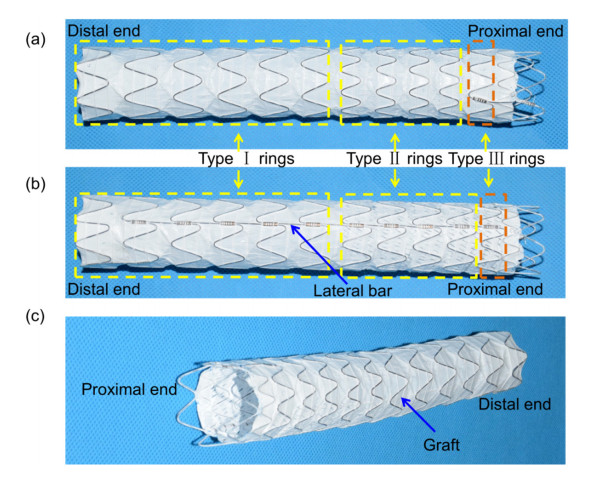

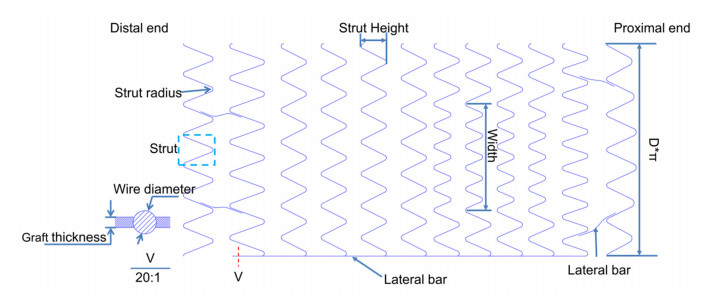
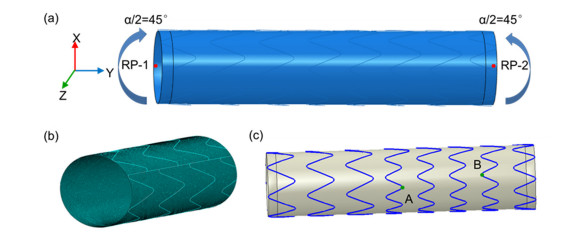

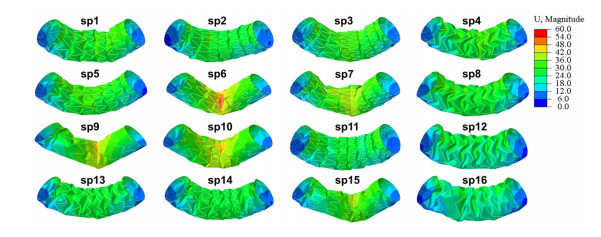
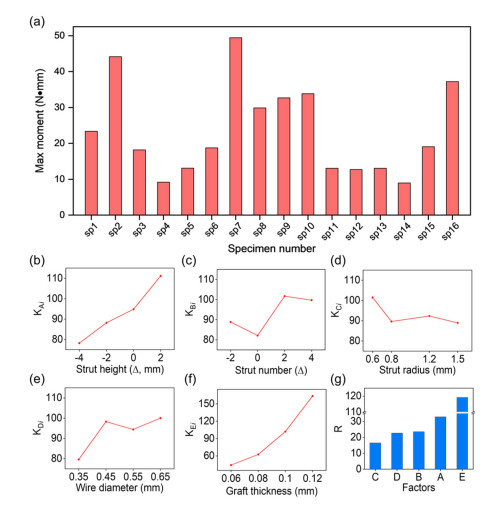
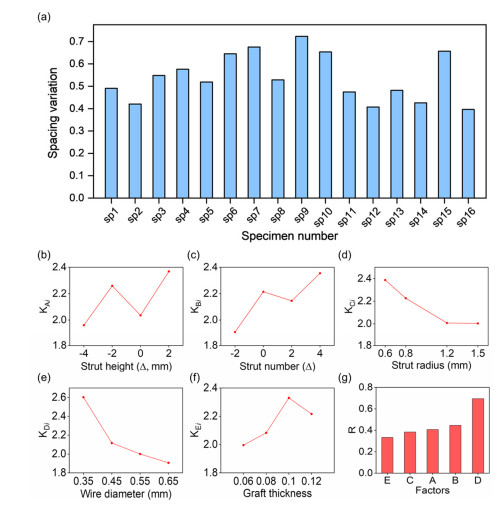
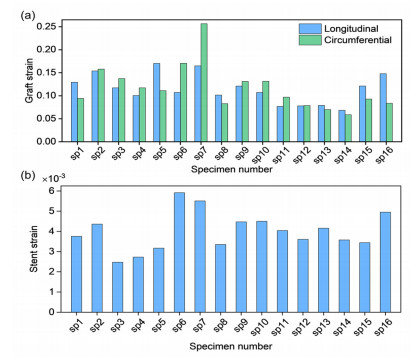



 DownLoad:
DownLoad: